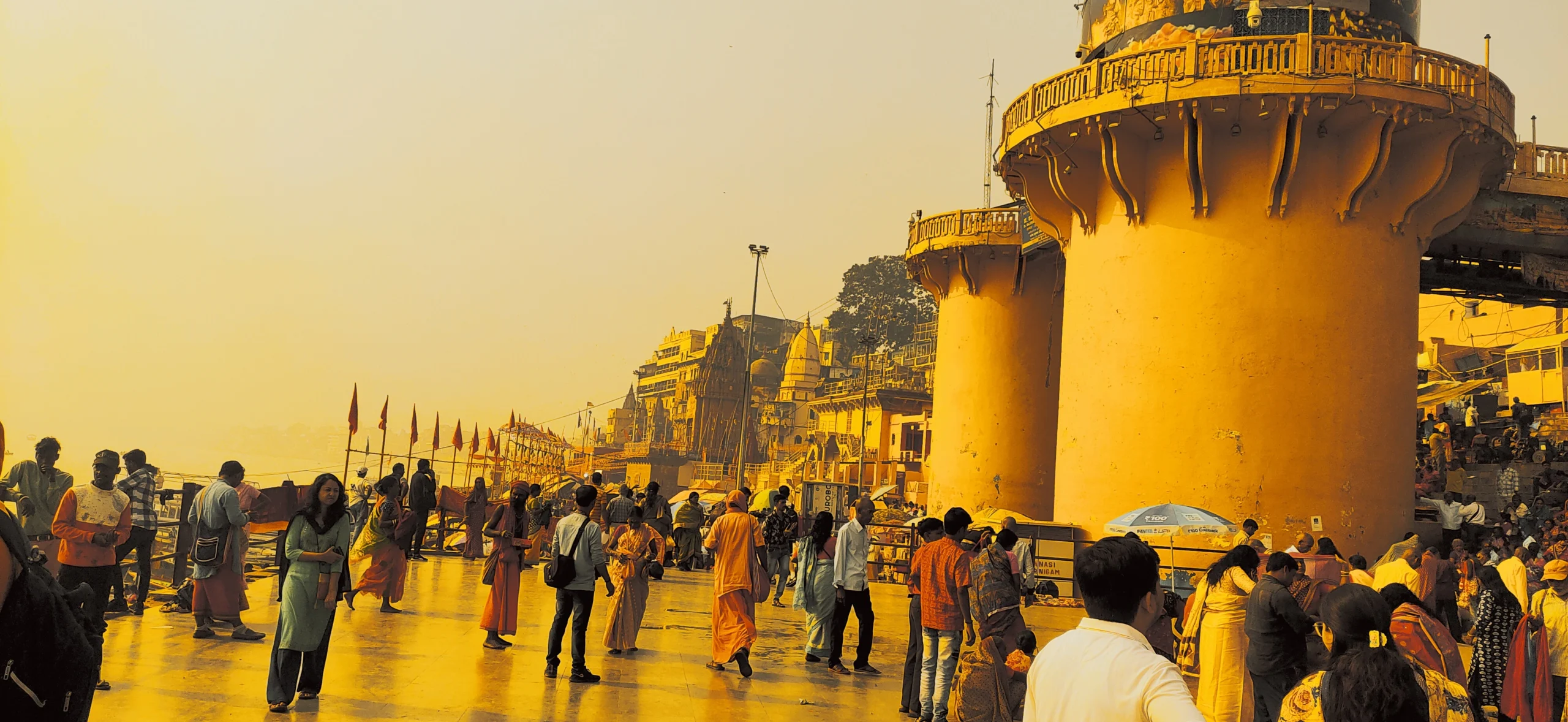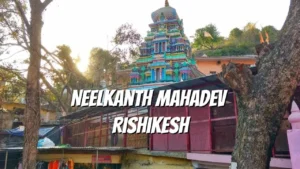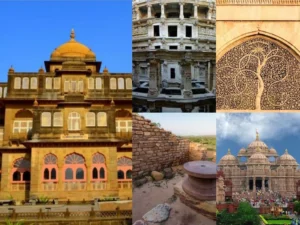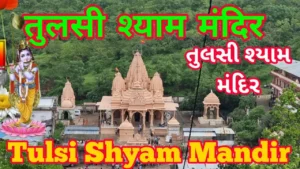The Ganges River, often referred to as the Ganga Pooja, holds a revered place in the heart of Hinduism. As it rushes turbulently from its Himalayan source, meandering through the plains and eventually meeting the sea, it becomes a river of myriad moods and mythic memories. This sacred waterway has been witness to the unfolding human drama along its banks, sharing in the joys and sorrows of millions for millennia.
Story of River Ganga
In ancient times, Bhagiratha, a renowned king of the Ikshvaku dynasty, undertook an extraordinary quest to bring the sacred River Ganga to Earth from the celestial realms. This endeavor was driven by his desire to secure nirvana for his ancestors, who had been cursed by Sage Kapila. Through years of intense penance, Bhagiratha succeeded in invoking the descent of River Ganga to the earthly plane.
Upon her arrival, Lord Shiva, in agreement with Bhagiratha’s devotion, channeled the flow of Ganga through his hair, allowing the river to gracefully cascade down to the Earth. The point of origin for this divine river is now known as Gangotri, and due to its descent from Lord Shiva’s hair, it is also referred to as Jatashankari.
As the Ganga journeyed, it encountered the ashram of Sage Jahna, whose dwelling was destroyed in the process. In response, the sage, infuriated, halted the river’s movement. Through Bhagiratha’s earnest pleas, Sage Jahna eventually released the river, leading to the association of Ganga with the epithet “Jahnavi.”
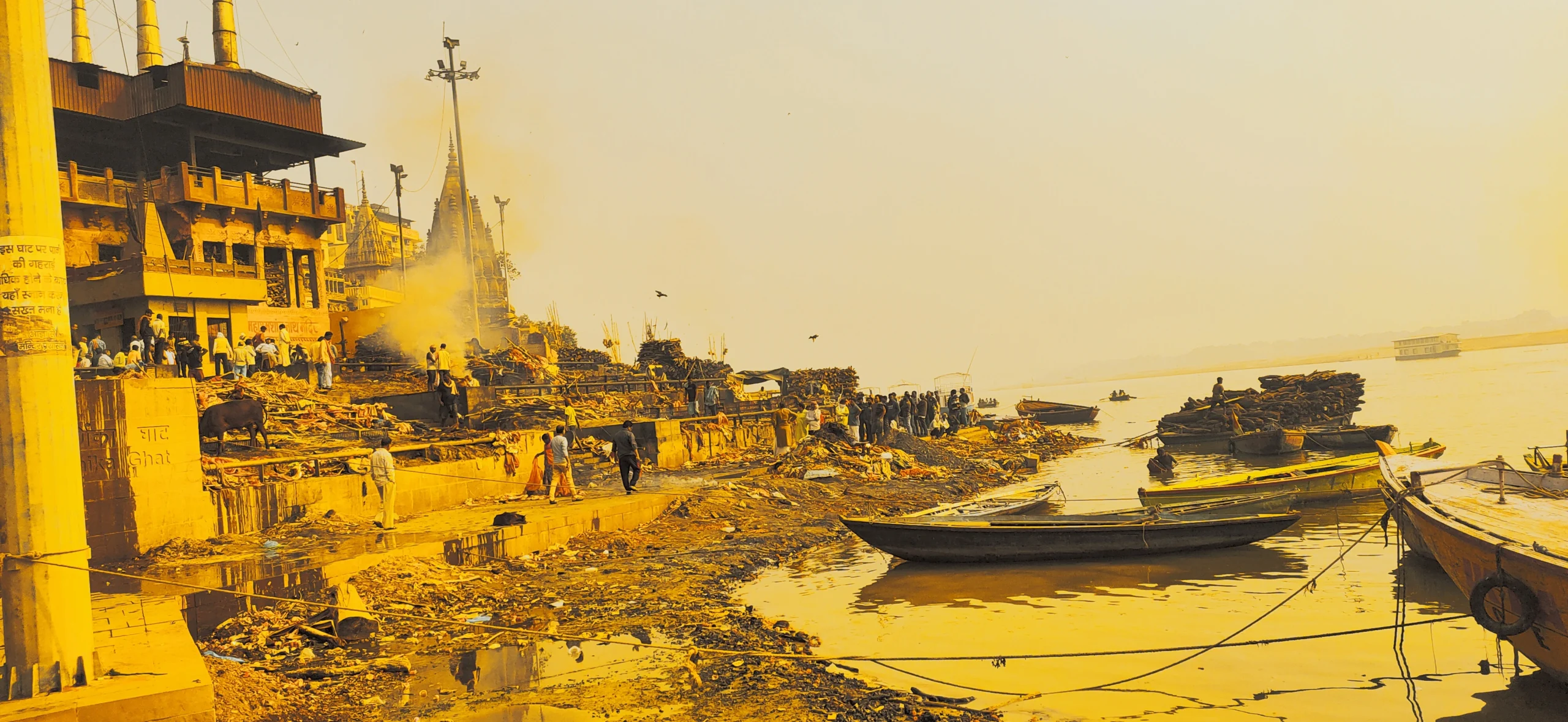
Continuing her course, the Ganga reached the ashram of Sage Kapila, where Bhagiratha’s forefathers had been cursed and turned to ashes. Here, the sacred river played a crucial role in liberating the departed souls, allowing them to find eternal peace. This significant event further contribut to the Ganga being known as Jahnavi, in remembrance of the sage’s involvement in her divine journey.
Must Watch : Ram Mandir
The Sacred Ganga Pooja / Yatra / Aarti:
The significance of Ganga Pooja, Yatra, and Aarti lies in their transformative power. Each evening, thousands of devotees gather at the banks of the Ganga at Haridwar and Rishikesh to witness the enchanting spectacle of the Ganga Aarti, a ritual paying homage to the greatness of this sacred river. Bathing in or offering worship to Devi Ganga is believed to purify the souls of the devotees, absolve their sins, and ultimately lead to Moksha or liberation of the soul.
Benefits of Ganga Pooja:
The ritual of Ganga Pooja is not merely a tradition but a deeply spiritual practice with profound benefits. It is believ to purify the souls of devotees, cure diseases and ailments, wash away sins, and bring peace to the souls of their ancestors. The ultimate goal is to attain Moksha, freeing the soul from the cycle of birth and rebirth.
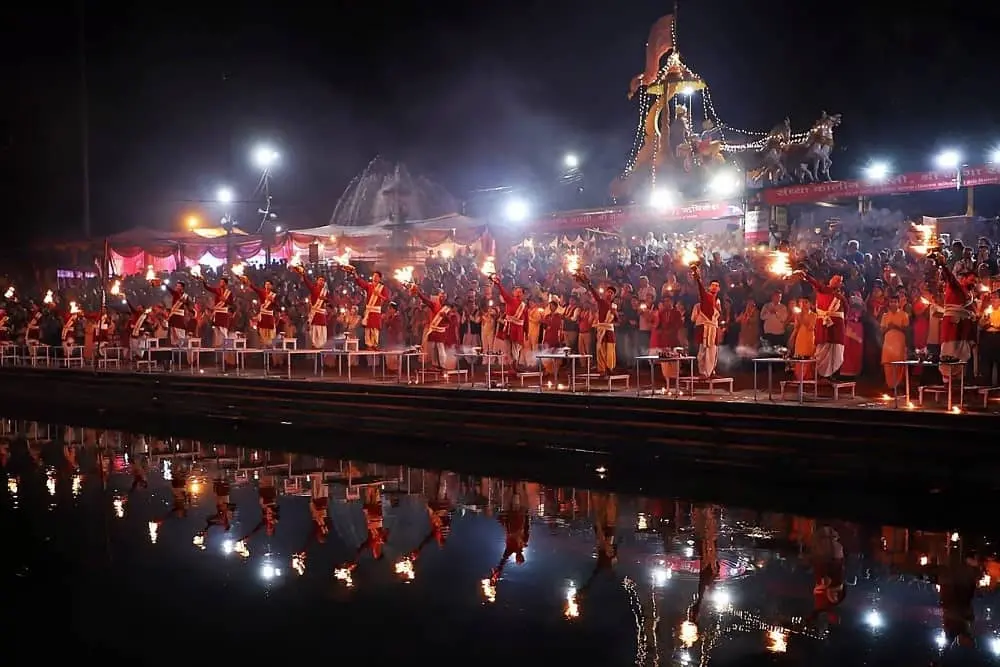
Ganga Dussehra – The Descent of Mother Ganga:
The festival of Ganga Dussehra marks the appearance anniversary of Ganga Devi, the goddess of the River Ganges. It spans ten days, beginning on the Amavasya (dark moon night) and concluding on the dasami tithi (tenth phase of the Moon). This festival is not just a celebration; it is a connection to the divine, a recognition of Ganga’s descent from the heavens to the earthly realm.
Mythical Origins and Legends:
The legend of Ganga’s descent to the earth is rooted in Hindu mythology. According to the story, the sage Bhagiratha’s severe penances brought Ganga down to the earth to cleanse the sins of humanity. It involved Lord Shiva taking the weight of the cascading Ganga on his matted hair. Symbolizing the divine intervention required to bring the sacred river to the plains.
Ganga Adventure Tourism
Rishikesh has transformed the Ganga into a hub for adventure tourism, offering enthusiasts thrilling experiences such as river rafting, kayaking, and body surfing in its fast-flowing emerald waters. The river’s unpredictable nature over challenging terrain creates epic rapids, catering to the adrenaline cravings of adventure seekers. For those seeking a more relaxed experience, slow boats are available, allowing travelers to appreciate the scenic beauty while immersing themselves in Indian culture and traditions.

The Ganga Ghats
The Ganga Ghats serve as a captivating tourist attraction. Ghats, consisting of a series of steps leading to the river, hold significant cultural and religious importance. Hindus believe that bathing in the Ganga is a sacred act capable of washing away all sins. Tourists often visit these ghats to partake in this ritual and also observe the funeral rites. Funeral ghats are places where families gather to cremate their loved ones, and the ashes are then offered to the river. One famous funeral ghat is the Manikarnika Ghat in Varanasi.
Worshiping Ganga – A Sacred Journey:
The worship of Maa Ganga is a vital ritual in Hinduism, with devotees following the stream of consciousness – the river that flows within. The seven ways of worshiping Ganga include calling out her name, having darshan of her, touching her waters, worshiping and bathing, standing in the waters of the river, and carrying clay dug out of the river. Ganga, in her anthropomorphic form, is depicted as a beautiful young woman standing on a crocodile and holding a water pot.
The Ganges – Beyond Physical Realms:
Festivals connected with rivers, especially Ganga Dussehra, are essentially bathing festivals. Bathing in the Ganga is believ to purify the bather of all sins. The Ganges is rever all over India, even in places far from its course. The river holds significance not just in its physical. Form but as a divine entity with the power to sanctify and liberate.
Ganga Dussehra and Sacred Geography:
The first ten days of the month Jyeshtha, known as Dashahara, are dedicated to honoring the river Ganges. The Ganga is believed to flow in three worlds – in heaven as Mandakini. On earth as the Ganges, and in the nether region as Bhagirathi. The worship of Ganga is centered around key locations such as Gangotri, Haridwar, Allahabad, Varanasi, and Sagara Island, each playing a unique role in the divine narrative.
The Tale of Bhagiratha:
The descent of the Ganges is intricately link to the story of King Sagara. Who performed the Ashwamedha sacrifice to establish his suzerainty. The 60,000 sons of Sagara, while following the sacrificial horse, disturbed the sage Kapila. Leading to a curse that resulted in their burning to ashes. Bhagiratha, the great-grandson of Sagara, undertook severe austerities to bring Ganga down to earth, seeking liberation for his ancestors.
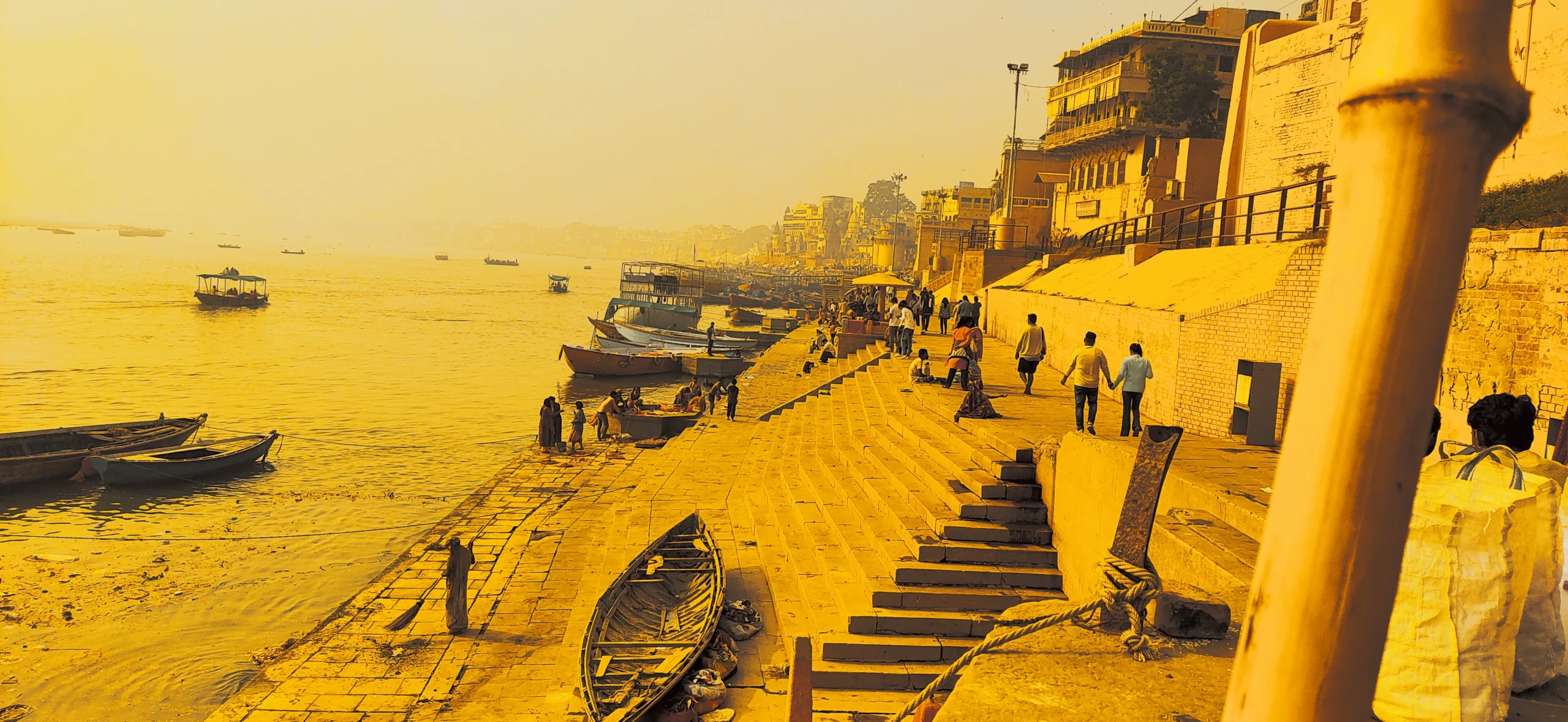
Significance of Ganga in Hindu Epics:
Ganga is more than a river; she is consider the daughter of the Himalayas and the goddess Mena. According to the Puranas, the heavenly Ganga flows from Vishnu’s toe. And her appearance on earth is intertwin with the Mahabharata. Where she married King Shantanu and became the mother of Bhishma.
The Eternal Purification of Mother Ganga:
The sacredness of the Ganges goes beyond religious beliefs; it is a phenomenon that even science struggles to explain. Unlike ordinary water, Ganga water retains its purity for years. The memories of early morning dips at Haridwar or the mesmerizing sight of leaf boats laden with flames during the evening Ganga Aarti remain etched in the minds of those fortunate enough to experience them.
Ganga Pooja – A Connection Beyond Physical Presence:
For those physically distant from the sacred Ganges, the connection remains through Manasa puja – meditation. The spiritual significance of invoking blessings from the Lord remains intact, regardless of physical proximity. The waters of Ganga, even in homes where Ganga jal is kept, continue to symbolize purity and divine connection.
Yoga Retreats by the Ganga

Numerous yoga retreats have sprung up along the serene banks of the River Ganga. Capitalizing on its calm and peaceful ambiance. Rishikesh, renowned as the Hatha Yoga capital of India, boasts several ashrams. Where visitors can engage in yoga practices against the backdrop of the Ganga. Following these tranquil yoga sessions, participants can leisurely wander and explore Rishikesh. Offering a distinctive and peaceful experience.
Also Read : Baap of IPL: Legends and Icons of Cricket’s Grandest Stage
Conclusion:
The rituals of Ganga Pooja, Yatra, and Aarti are not just religious practices. They are profound journeys connecting the devotee with the divine energy of the sacred Ganges. From the mythical origins to the present-day worship. The Ganges River continues to be a source of inspiration, purification, and spiritual upliftment for millions. As we navigate the sacred geography from Devprayag to Varanasi. We are invit to embark on a voyage in time and space, blending the physical with the metaphysical, and connecting with the eternal flow of consciousness that is the Ganga.

